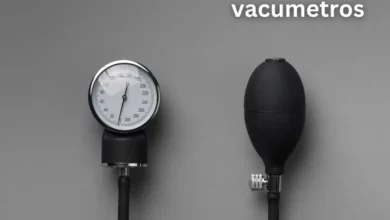What is Gidler? – Everything You Need To Know

Interested in learning more about gidlers and why they’re causing a buzz lately? You’ve come to the right spot! This article will provide a comprehensive breakdown of everything you need to know about gidlers – their origins, why they’re intriguing, and how you can acquire one for yourself.
By the time you finish reading, you’ll be well-versed in gidler expertise, equipped to impress your friends with your newfound understanding. So, take a seat, unwind, and prepare for an in-depth exploration of gidlers!
The Gidler: A Unique Water-Dwelling Creature
Introduction to Gidlers
Have you ever been curious about gidlers? These unique creatures inhabit lakes and rivers, boasting a distinctive appearance. Picture a plump body reminiscent of a tadpole, complemented by four stubby legs and a tail that functions like a fifth limb.
Gidlers exhibit a diverse range of colors, spanning from greenish-brown to vibrant orange. As for their habitat, they prefer to dwell near the bottom of bodies of water, where they feed on algae, small fish, and invertebrates.
Amphibious Marvels
Gidlers are amphibians, which means they lead a dual life – one in water and the other on land. In their larval stage, known as “tadgidlers,” they possess gills and tails for swimming. As they mature into adulthood, gidlers undergo a transformation, developing lungs and limbs that enable them to traverse the land. Nevertheless, they still require moist skin to thrive.
Environmental Stewards
Despite their unusual appearance, gidlers serve a vital function in ecological balance. By controlling insect and algae populations in their aquatic habitats, gidlers play a significant role in maintaining the health of the environment. The next time you encounter these distinctive amphibians in lakes or streams, pause to acknowledge the essential role they fulfill in nature’s delicate equilibrium.
Unveiling the Past: The Mysterious Beginnings of the Gidler
The gidler boasts a history dating back centuries, although its exact origins remain enigmatic. Some historians trace its roots to 15th century England, where it was purportedly utilized as a useful tool by farmers and craftsmen. Alternatively, others speculate a German origin, proposing that it may have been introduced to England via trade routes.
The Gidler’s English Affair
Irrespective of its initial origins, the gidler gained popularity in England and later made its way across the Atlantic to North America during the 1700s. Early colonists recognized its versatility and utilized it for various tasks, including constructing shelters and undertaking essential repairs.
Evolution of the Gidler
From Modest Origins to Contemporary Marvel: Over the years, the gidler has undergone a remarkable transformation, evolving into the multifunctional tool we know today. Modern gidlers boast an impressive array of features, including:
1. Pliers for Grasping and Cutting: Equipped with pliers to efficiently handle grasping and cutting tasks.
2. Screwdrivers (Flathead and Phillips): Featuring both flathead and Phillips head screwdrivers for effortlessly driving screws.
3. Versatile Knives: Sporting knives designed to meet various cutting needs.
4. Bottle Openers: Including convenient bottle openers for obvious reasons!
5. Mini Flashlights: Incorporating mini flashlights to provide additional illumination when needed.
A Toolbox Necessity
A dependable gidler is an indispensable addition to any toolbox. Despite its compact size, this versatile tool has stood the test of time for centuries. Whether assembling furniture or handling minor repairs, the gidler remains a reliable companion in households worldwide. Its enduring popularity and presence in toolboxes serve as a testament to its timeless utility.
The Gidler’s Enduring Legacy
A Versatile Companion: Whether you’re assembling furniture, tackling minor repairs, or simply need an extra hand around the house, the gidler is up to the task. Its adaptability and versatility make it an essential component of countless toolboxes. The gidler’s enduring legacy reaffirms its status as a timeless classic that continues to stand the test of time.
Discovering the Wonders of Gidlers: Fascinating Insights
Aquatic Aces
Gidlers, fascinating creatures indeed, exhibit impressive swimming abilities. Being semi-aquatic, they thrive in lakes, rivers, and streams.
With their webbed feet and sleek bodies, gidlers demonstrate remarkable swimming prowess, capable of remaining submerged for an impressive 15 minutes. Some gidlers have been observed covering distances of up to 5 miles in a single day, highlighting their remarkable aquatic agility.
Nighttime Navigators
For those seeking a gidler sighting, the optimal time is during the twilight hours. These creatures are primarily nocturnal, venturing out on food-seeking expeditions under the cover of darkness. During the day, they retreat to their burrows or nests to rest.
Equipped with night vision and dark fur for stealth, gidlers adeptly traverse the nighttime landscape, making dawn or dusk the ideal times to observe them in their natural habitat.
Diverse Dining Habits
Gidlers are genuine omnivores, indulging in a diverse diet that encompasses plants, small fish, frogs, insects, and crustaceans. Their opportunistic tendencies drive them to consume whatever food sources are abundant in their surroundings.
With sharp teeth and claws at their disposal, gidlers seamlessly transition from nibbling on aquatic plants to seizing fish from the water, demonstrating their adaptability in the realm of dining.
Leading Ladies
In the social hierarchy of gidlers, there’s a role reversal – females take the lead. Female gidlers, referred to as mollys, establish distinct hierarchies within their social groups. They engage in territorial disputes and compete for mating privileges.
Conversely, male gidlers, known as hannies, typically adopt a more relaxed and submissive demeanor. Mollies, often aided by older offspring, assume the duty of nurturing the young, while hannies fulfill the role of protectors.
Gidler Marvels
These fascinating insights barely skim the surface of the captivating realm of gidlers. The more you study these peculiar creatures, the further you’ll immerse yourself in the marvels that render them truly distinctive!
Gidlers: Unsung Heroes in Modern Society
Driving Smooth Journeys
Gidlers, often overlooked yet essential, play a pivotal role in our daily lives. They serve as the driving force behind the seamless operation of crucial equipment and infrastructure that sustains our society’s functionality.
Crucial Contribution to Transportation
In the realm of transportation, gidlers are the unsung heroes. They labor tirelessly to upkeep our roads, clear snow and debris, and guarantee the smooth operation of public transit.
From managing snow plows to driving buses, gidlers are instrumental in maintaining the efficiency of our transportation systems. Their absence would lead to considerable disruptions in our daily commutes and journeys.
Powering Our Lives
In the domain of utilities, gidlers assume responsibility for the systems that energize our homes and businesses. They oversee operations ranging from regulating power plant turbines to supervising water treatment facilities, guaranteeing a consistent provision of electricity and potable water.
Pipeline controllers and technicians diligently monitor the complex networks of gas and oil pipelines, facilitating the distribution of crucial resources. The steadfast dedication of gidlers is fundamental to ensuring the reliability of our utilities.
Waste Management Stewards
In waste management and sanitation, gidlers shoulder the task of collecting and managing waste and recycling materials within our communities.
From driving garbage and recycling trucks to operating landfill machinery and supervising waste processing systems, gidlers uphold public health regulations and promote environmental sustainability.
Their efforts guarantee responsible waste management practices, safeguarding the health of our communities and the integrity of our planet.
The Hidden Pillars of Society
Though frequently operating behind the scenes, gidlers serve as the cornerstone of our modern lifestyle. Their contributions in transportation, utilities, and waste management uphold the essential infrastructure and services upon which communities depend.
Without the steadfast dedication and hard work of these often overlooked individuals, the conveniences of our contemporary way of life would remain out of reach.
Caring for Your Gidler: Simple Tips for a Happy Plant
Providing the Right Light
Provide your Gidler with bright, indirect light to promote optimal growth. Position it near an east or west-facing window to receive ample daylight, but shield it from direct sunlight. Excessive sun exposure can damage the leaves, while inadequate light may result in leggy growth.
Watering Wisely
Monitor your Gidler’s soil moisture levels closely. Water it when the top few inches of soil become dry to the touch.
Throughout the growing season, ensure thorough watering once a week, allowing any excess water to drain away. Reduce watering frequency during the fall and winter months when growth rates decrease. Prevent your Gidler from sitting in water to avoid the risk of root rot.
Feeding with Fertilizer
During the growing season, enhance your Gidler’s growth with a balanced fertilizer containing equal parts nitrogen, phosphorus, and potassium (e.g., 10-10-10). Dilute the fertilizer to half the recommended strength and apply it every few weeks.
Fertilization promotes robust growth and enhances flower production. Refrain from fertilizing in the fall and winter months when growth rates naturally slow down.
Repotting Ritual
Every 2-3 years during the spring, consider repotting your Gidler into a new container. Select a pot with drainage holes that is one size larger than its current one. Begin by adding fresh potting mix to the bottom of the new pot, then carefully place the root ball inside.
Surround the roots with additional potting mix, ensuring the plant remains at the same depth as before. This routine refreshes the soil and provides ample space for continued growth.
Keeping Pests at Bay
Periodically inspect your Gidler for prevalent pests such as aphids, spider mites, and mealybugs. Remove them by gently wiping with a damp cloth or employing insecticidal soap as needed.
Monitor for signs of leaf spot disease and address it promptly with a suitable fungicide. Enhance air circulation by eliminating any dead or dying leaves. These proactive measures help maintain your Gidler’s health and vitality.
A Lush and Thriving Gidler
By adhering to these straightforward care guidelines, you can keep your Gidler vibrant, lush, and blooming. Providing the perfect blend of light, water, and nutrients will support its longevity, ensuring it continues to flourish and enhance your surroundings for years to come.
Sum Up
This comprehensive article delves into the captivating realm of gidlers, encompassing their origins, distinctive attributes, and their pivotal role in both the natural world and human society.
From their enigmatic beginnings and evolutionary journey to their varied characteristics and the lasting impact of gidler tools, the article delves into the realm of these aquatic creatures and their often-overlooked significance in our contemporary world.
Concluding with practical advice on nurturing gidler plants, the piece ensures they flourish and add beauty to any space. Altogether, it offers a captivating exploration of gidlers and their multifaceted influence on our lives.



